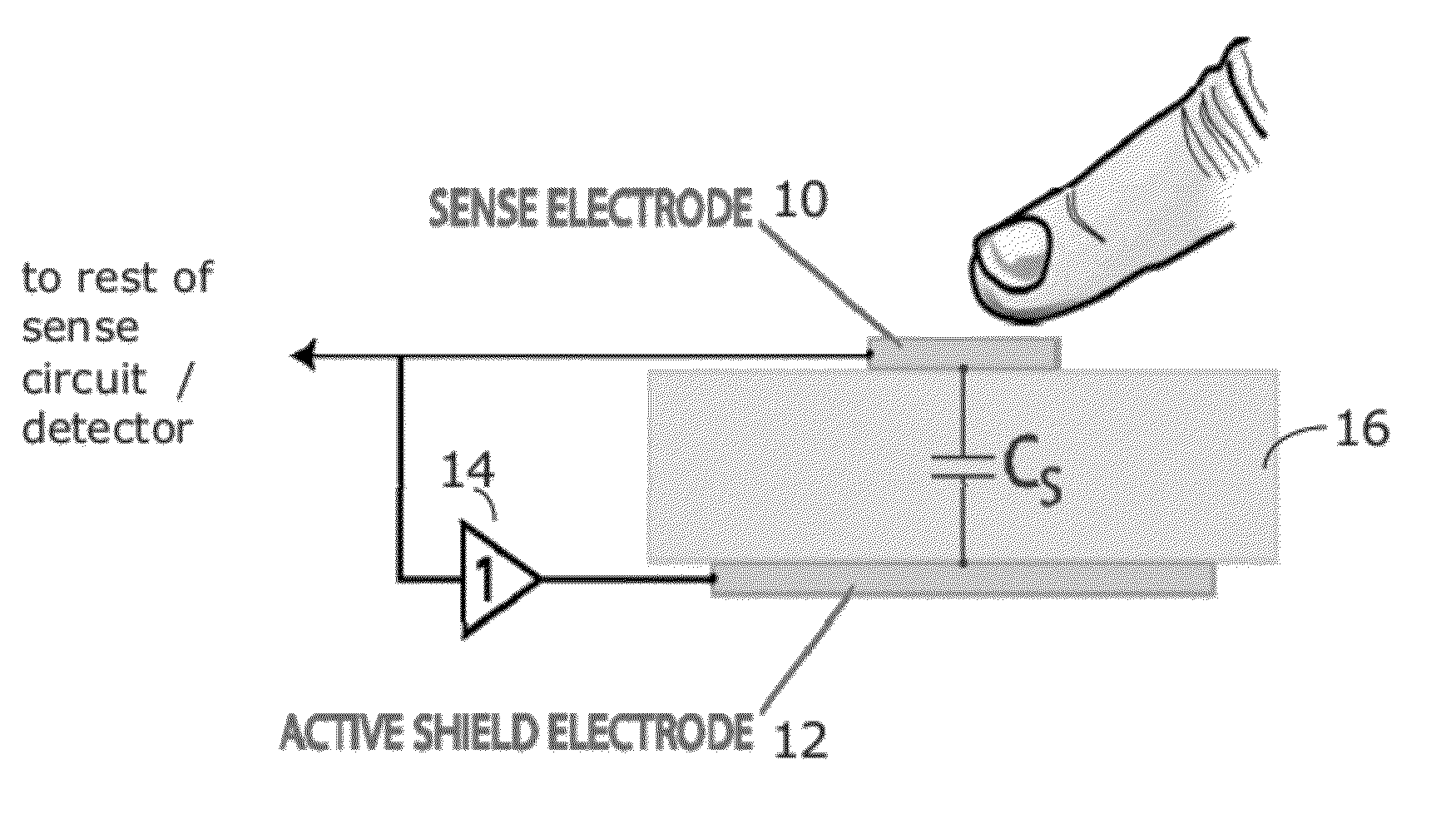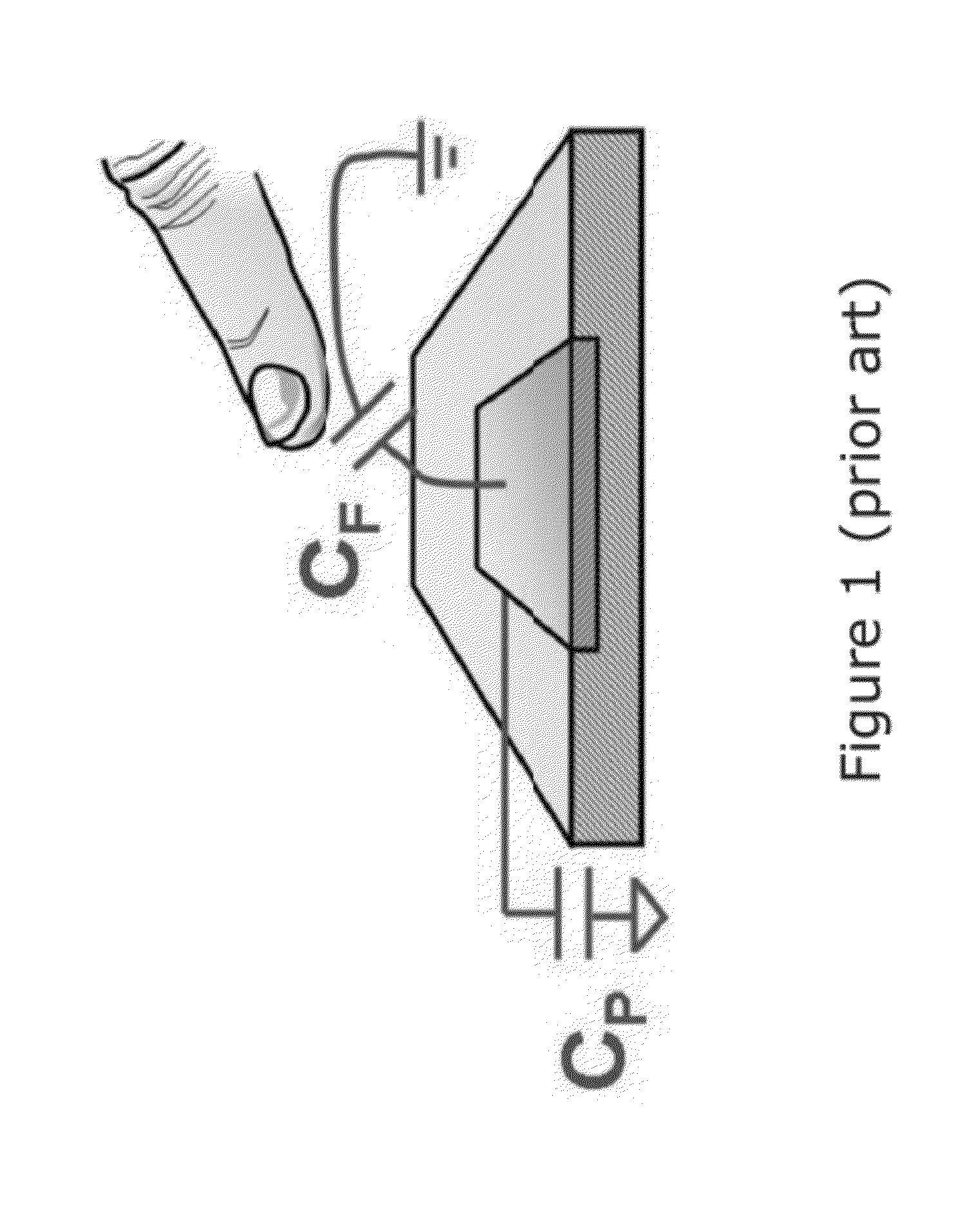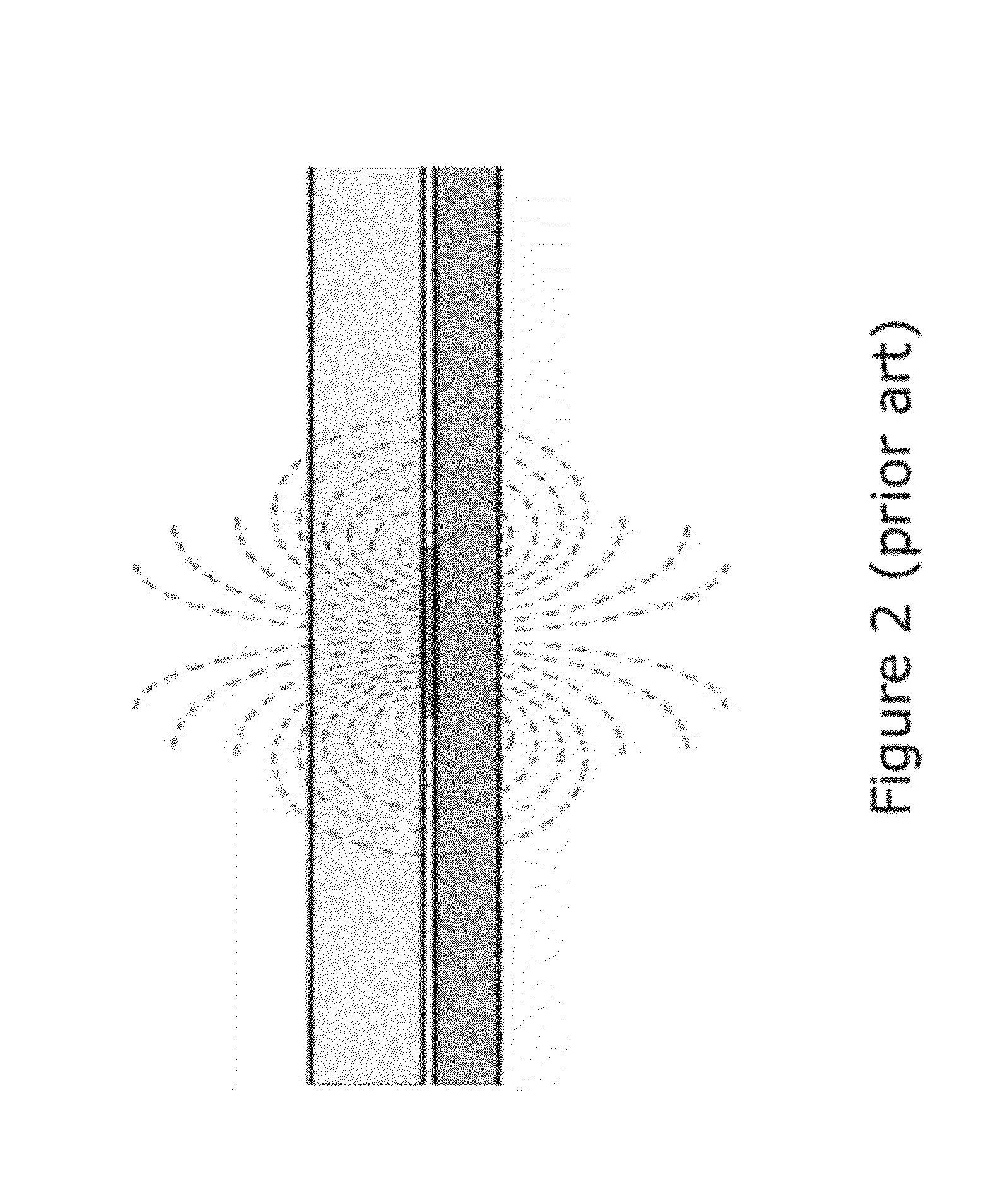Capacitive sensor with active shield electrode
a shield electrode and capacitive sensor technology, applied in the direction of resistance/reactance/impedence, pulse technique, instruments, etc., can solve the problems of noise immunity and electromagnetic compatibility conflicting with shielding requirements, and achieve the effect of increasing sensitivity
- Summary
- Abstract
- Description
- Claims
- Application Information
AI Technical Summary
Benefits of technology
Problems solved by technology
Method used
Image
Examples
Embodiment Construction
[0029]Described herein is an improved way to configure a capacitive touch sense electrode on a substrate.
[0030]In addition to the shielding considerations, it would also be desirable to use the back side of the substrate for additional circuitry. However, mounting electrical components on the back side involves similar compromises to sensitivity.
[0031]As shown in FIG. 5, parasitic capacitance of a capacitive sense electrode 10 may be effectively reduced by using an active shield electrode 12. The active shield electrode 12 is placed on a substrate, such as a printed circuit board (PCB). The active shield 12 is aligned with the sense electrode 10 on a backside (e.g., a side opposite the sense electrode 10). The active shield electrode 12 is driven with a (preferably) unity gain amplifier 14 to maintain constant DC potential difference between the shield 12 and sense 10 electrodes. As a result, the charge on the sense-to-shield capacitance CS will be unchanged, even as the sensing cir...
PUM
 Login to View More
Login to View More Abstract
Description
Claims
Application Information
 Login to View More
Login to View More - R&D
- Intellectual Property
- Life Sciences
- Materials
- Tech Scout
- Unparalleled Data Quality
- Higher Quality Content
- 60% Fewer Hallucinations
Browse by: Latest US Patents, China's latest patents, Technical Efficacy Thesaurus, Application Domain, Technology Topic, Popular Technical Reports.
© 2025 PatSnap. All rights reserved.Legal|Privacy policy|Modern Slavery Act Transparency Statement|Sitemap|About US| Contact US: help@patsnap.com



